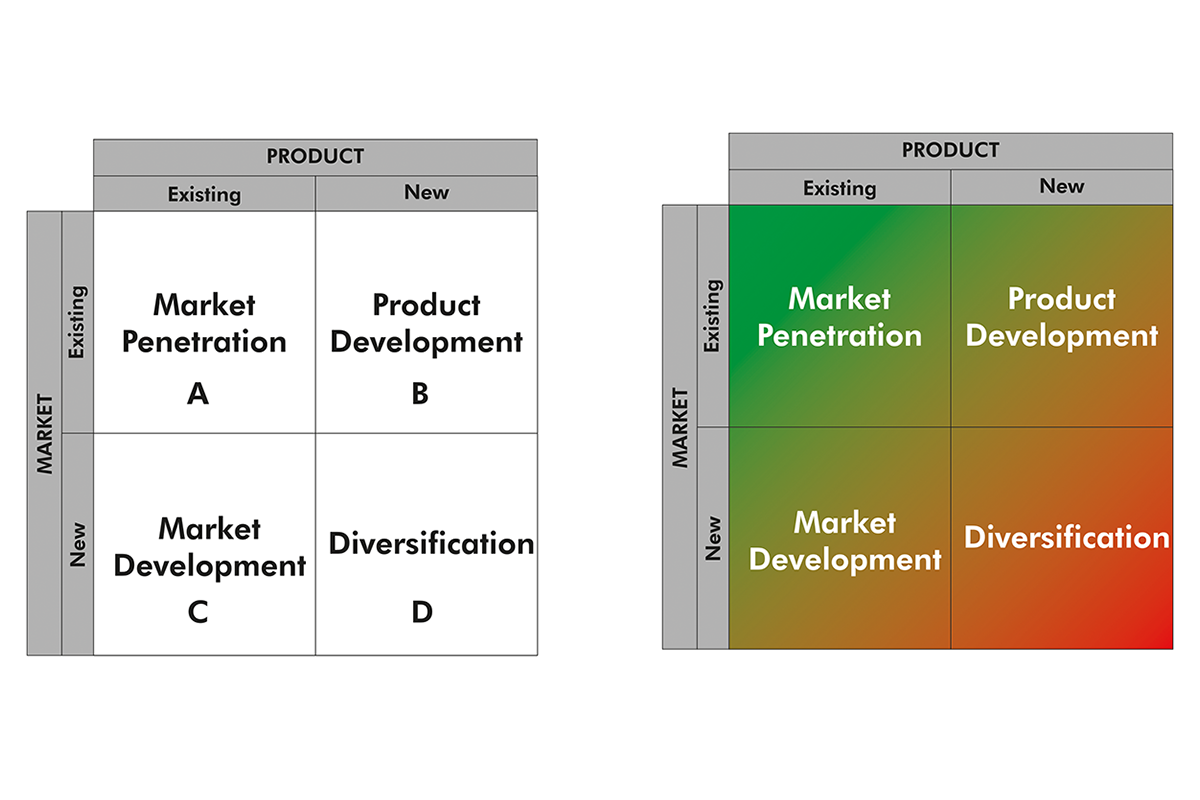Taking new product to a new market is madness according to Ansoff’s Matrix. But Richard McCombe of Matic Media tells why he thinks PSPs can turn things around.
I am told Ansoff’s Matrix is pretty old-hat thinking in the world of marketing but after attending a seminar on marketing strategy I became aware of this theory and realised why I felt that we kept failing.
Day one of the seminar ended on the punchline that “the more time we spend doing research and development the less efficient we will be at gaining growth - it’s the slowest and most costly route to growing your business”. Ouch. That hurt.
I have spent the last ten years trying to iron out seasonality - consultancy-based selling we found difficult to grow. We manufacture signs and display graphics with many disciplines under one roof. Our recent analysis has shown we have 126,000 combinations of ‘products’ in our business: XYX variation of ABC offerings. So we have commoditised 180 products by process mapping products that are manufactured the same way continually, right down to print, cut, mount, packaging times. This does not solve the problem of bespoke jobs with better margin because service is the commodity.
Selling existing product to existing customer is what we tend to do. To grow we look for new customers to which we can sell the existing product - this is called market penetration (Fig 1 - A) and is the fastest, safest and lowest cost method of growing our businesses.
It’s a simple growth strategy…one that everyone is doing, but we are all competing on price when it’s a commodity, yes?
I think we - sign and graphics suppliers - are underdogs. Every day throws us curve balls, so we bend, bash, stretch, fold and make something by applying all our common sense to ‘invent’ new products. These new products we then sell to our existing clients - ie product development (Fig 1- B).
We have developed some cardboard engineered products and can take them to our existing customers, but we encounter problems in developing the weird and wonderful stuff we have never done before. Does this sound familiar? So what about new market sectors (Fig 1 - C)?
In 2007/8 the housing market was going great. Having a roll-to-roll printer and a Rolls Roller, we thought, why not sell estate agent boards? Simple print, mount, cut and sell to estate agents right? Wrong. Our poor market research hadn’t flagged up that a franchise cornered this market.
We are the company that developed the Web-to-print design your own printed manicure nail stickers – www.WooWooNails.com.
This was not a complete failure, it ironed out seasonality and came off the back of customised photo canvas website called PhotoArtWarehouse.co.uk where we manufactured pieces of wallart 300K for 200K unique customers and never spoke to them.
We sold them through daily deal sites like Groupon and use it in the winter months when we were low on business.
This was new product taken to a new market - consumers (Fig 1 - D).
It was hard work for little margin but kept us fully employed and did not make losses in the winter.
Diversification is risky (Fig 2 - the red zone). You spend all your time researching and developing the new product and then trying to create traction within markets you don’t know.
You will pour money down the drain and quite often fail because you just don’t know enough about the new market and how it works. So day one of the seminar ended with the conclusion that we should focus on market penetration.
By the start of day two I’ve been thinking of ways to get greater market share by using existing products in existing markets as this is the simplest growth strategy (Fig 2 – the green zone). But those of us who do not continually innovate and allocate time in the red zone will never be able to move ahead of current trends, offer our existing markets new products different from our competitors and strive to be different.
It has been a continual drive for efficiency through software development that now sees us in a great position. We have launched a trade platform (www.GraphicWarehouse.co.uk) with 180 large-format printed products where users can get a price with a customised template, upload artwork, preflight, edit and send directly to our print queues across nine printers with dedicated stocks - and this can happen in 60 seconds from anywhere in the world.
We did not stumble upon this. Instead we made many costly mistakes by trying to take new products to new markets we did not understand, but in doing so we became field leading software developers and applied process to each product that we have ‘commoditised’.
We have moved all the learning and experience from ‘diversification’ into the green zone and are now focusing on ‘market penetration’. Sometimes you have to take a risk.


